 Liverpool may have
the financial wealth to compete for the best players from around the globe, but their
decision to fund and build a multi-million pound Academy five years ago demonstrated their
desire to continue to nurture and develop their own young talent.
Under the guidance of Academy Director and Liverpool legend Steve Heighway, the
Academy is a world-class facility designed to give every young boy on the club's books the
best possible chance of following in the footsteps of some of the club's greatest players.
 Michael Owen, Steven Gerrard, Robbie Fowler, Steve McManaman and Jamie Carragher all came
through the youth ranks of Liverpool FC to prove that locally produced players can develop
into world class stars having been groomed by the Reds from an early age. Hopefully there
will be many more on the way over the coming years.
Michael Owen, Steven Gerrard, Robbie Fowler, Steve McManaman and Jamie Carragher all came
through the youth ranks of Liverpool FC to prove that locally produced players can develop
into world class stars having been groomed by the Reds from an early age. Hopefully there
will be many more on the way over the coming years.
Frank Skelly, the Academy's Operations Director, takes us on an exclusive tour
behind the scenes and explains the facilities on offer to the potential future stars of
Liverpool FC. To take a virtual tour of The Academy Click Here ››
Tom Saunders Lecture Theatre
Frank Skelly: The Tom Saunders Lecture Theatre has
only been named in the last two years, but we were very proud and honoured to be friends
and acquaintances and colleagues of Tom Saunders', whose contribution to the football club
is quite unique. He was a mentor to every manager since Bill Shankly and being an
ex-headmaster, he was also the first youth development officer in England really.
It's an education room. On Monday, Wednesday and Friday mornings our boys can use
this partly as a classroom and a lecture hall. Dave Shannon and John Owens have their
games videotaped and they will come in on a Monday afternoon and they will go through and
discuss and analyse, with the boys, certain aspects of their game.
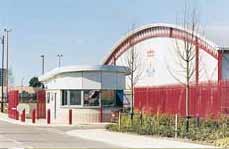 Legend wall
Legend wall
Frank Skelly: Our legends wall celebrates the achievements of
the likes of Bill Shankly, Bob Paisley, Joe Fagan and obviously Steve Heighway, who played
over 300 times for the first team and is one of the most famous legends that we have.
We never forget where we've been because these guys were the start of the
regeneration of Liverpool Football Club. We're doing well and we're playing in a difficult
environment and a difficult time for football, but we'll make it.
Education
Frank Skelly: It's useful to see the degree in which
the football club have invested in the facilities. Our education room has changed in the
last eighteen months into a very high-tech room with computers and both our education and
welfare managers have made a significant contribution education in terms of good
accreditation.
The boys do a lot of subjects, it is very well managed and an awful lot of good
work takes place and I'd say that they boys really enjoy the work. A lot of it is
sports-related in terms of Sports science and it sets them on a good career path after
they have finished playing football. It certainly makes them a rounded person in terms of
what we are trying to do, not only as a footballer but to deal with the media at a very
young age and to be able to use their finances in the right sort of way.
The education side of things is a large part of the infrastructure of the
development of an Academy player and as such a lot of emphasis is placed on it.
Pool Room
Frank Skelly: This is essentially a classroom area,
but as you can imagine, you can't have the boys having to always concentrate on the
football side, so this is where they relax. We've developed it with a pool table and a
little footy table and table tennis. It's important that during their lunch times they can
relax because it's hard work. People think it's easy coming from Monday-Friday and playing
on a Saturday, but it is actually quite hard physically and mentally. This is provided for
them so they can chill-out for the hours in between the hard work and concentration.
Cafeteria
Frank Skelly: All the boys will eat in the cafeteria
have a breakfast here and will eat at lunchtime all together. There is no top table. They
have a very healthy diet organised by John, Di and Joe, our fitness coach, to make sure
that the boys are getting good nutrition and not eating fat.
John and Di work up at Liverpool University and they helped us for three years and
when they came here, we enjoyed their bacon butties so much that we decided we'd bring
them with us.
 Pitches Pitches
Frank Skelly: We have 10 grass pitches altogether, of
which four are full size. Two are intermediate and three are junior pitches as well as the
front pitch. The quality and the work that Neil Holden and his boys put in is tremendous.
The water is pumped out of bore holes, which are 300 feet underground and we have
200 sprinklers to make sure the pitches are always being watered and fed. They're
basically sand based, so they do need water in order to stay healthy.
The standard that we're working to is second to none and it's a credit to the lads
that they're able to do it. I've worked out that we need eight playing surfaces a week to
meet our commitments and if you put that in perspective it tells you the amount of work
that's necessary to keep us going and maintain those standards.
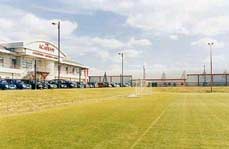 Match
pitch Match
pitch
Frank Skelly: We're very proud of our main match
pitch. This is where all the boys from 9-year olds and upwards aspire to play because then
they will be playing for the U18s team or U16s team, which ultimately means they might be
of the standard necessary to join up with the Melwood squad.
Every Saturday morning some of the staff from Melwood will be here watching our
games, so that they can see how our boys are developing. Then they can have friendly
matches down at Melwood, where our boys can go down and mingle with the boys down there,
which will help their development. It gives them a good awareness of what they have to do
in order to meet the standards necessary for us to take them through and basically earn a
living from the game.
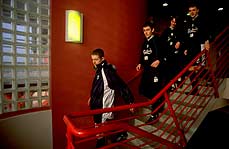 Gymnasium Gymnasium
Frank Skelly: The gymnasium is well equipped and well
set out. Each boy has his own programme as they each require different things. It might be
upper body strength, or it might be abdominal strength, but essentially it's providing a
fitness programme and a strength programme to meet the requirements. First and foremost,
the boys have got to be athletes these days because the rules of the game have made it
faster and so the boys have got to be able to cope with that as well as the skill side of
things.
The emphasis on technique work is because we've been behind other countries such as
the Spanish or Italians. I'm not saying we've actually achieved those levels, but in my
view if you look at the England set-up, the technique is much better than it used to be.
Medical Centre
Frank Skelly: We have a hydrotherapy pool, two
full-time chartered physios and a doctor. We have a very quick fast track to getting the
boys up and running and going again.
Even though we're on the youth side of things, these facilities are probably better
than a lot of league clubs and those are Liverpool Football Club's standards shining
through again.
We thought at one time that we'd be getting money from the lottery and the sports
council, which never materialised, so everything that has been put into it has been a
result of Liverpool Football Club's commitment to the youth side of things. It's been paid
back as we haven't done badly in terms of what has come out of the hard work of the
Academy director and the coaches here.
Laundry
Frank Skelly: When our laundry lady comes in on a
Monday there will be somewhere in the region of ten kits ready to wash. She'll have to
come in on Saturday and Sunday to do work that's been left over from Friday. Then she has
to prepare all the kits for the boys to go out and train in. Its quite considerable in the
winter because there's winter clothing and winter tops.
Very similar to any club, part of her work is doing some sewing and putting some
numbers on. Each boy has his own number and has all his own kit which is renewed every
year. All the junior boys from 7-8 years upwards get a full kit as well to train and play
in, the same as the first team.
Dressing Rooms
Frank Skelly: We have 10 dressing rooms at The
Academy. The youngsters have got their own showers, hairdryers, washbasins and it's always
maintained immaculately. Whether it's the away teams that we play or whether it's our own
youngsters in the evenings, we set the standards in terms of hygiene, cleanliness and the
way it's looked after. If it's allowed to drop, then very quickly you can get into bad
habits.
We can play six games in one day with the facilities that we have. Invariably we
don't because generally four is a good amount to cope with. |
|
 Liverpool Academy Director - Frank McParland Liverpool Academy Director - Frank McParland
The Youth Academy at Liverpool was set up to help bring the youngters on Liverpools
books through to the first team and beyond. In the past Liverpool have produced a few
youngsters but in todays modern game the onus is on the clubs to produce their own players
rather than pay hugely inflated transfer prices for new players. In the past players such
as Robbie Fowler and Steve McManaman and Dominic Matteo have all progressed through the
setup at Anfield. Today though with the aid of the academy we can nurture youngsters on
even better with the hope that even more youngsters can go all the way to the first team.
In the last couple of years even three players from the 1996 youth cup winning side are
now all regulars for the Liverpool first team. These three are of course Michael Owen,
Jamie Carragher and David Thompson. This year they have been followed through the ranks by
Steven Gerrard and there's more to come on the youth conveyor belt. There are big hopes
for the youth sides at Anfield and the state of the art facilities at the academy let the
coaching staff here pick out the best players.
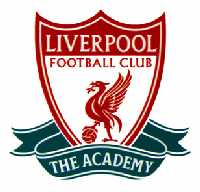 The
academy is housed in the Kirkby area of North Liverpool and not only has it got outdoor
pitches but it now has state of the art indoor pitches where the surface is designed to
act exactly as grass. So good is the surface, that for the first time slide challenges can
be made, safe in the knowledge that injury will not be produced by the surface. The
academy first opened its doors in late 1998 and had been well supported all the way by
people like Steve Heighway, Director of Youth at Liverpool. The new academy area now
allows the main training ground at Melwood to be kept solely for the first team squad and
allows all the areas there to be kept in tip top condition. What it also provides is a
stepping stone for youngsters to strive for. Their initial aim is always to leave the
facilities in Kirkby to train at Melwood as this means they are progressing. The
academy is housed in the Kirkby area of North Liverpool and not only has it got outdoor
pitches but it now has state of the art indoor pitches where the surface is designed to
act exactly as grass. So good is the surface, that for the first time slide challenges can
be made, safe in the knowledge that injury will not be produced by the surface. The
academy first opened its doors in late 1998 and had been well supported all the way by
people like Steve Heighway, Director of Youth at Liverpool. The new academy area now
allows the main training ground at Melwood to be kept solely for the first team squad and
allows all the areas there to be kept in tip top condition. What it also provides is a
stepping stone for youngsters to strive for. Their initial aim is always to leave the
facilities in Kirkby to train at Melwood as this means they are progressing.
 The
facility in Kirkby has a total of twelve pitches, four of which are full size. The reds
have a large number of scouts operating within a short distance of the academy now to find
the best youngsters. With a ruling possibly coming to effect soon as well that all young
players must live within a certain distance of the ground as well this becomes
particularly important. As well as scouting trips the coaches operate in schools around
the Liverpool area to help the young children in the community to develop their
footballing skills. Such is Liverpool's training into mental toughness and ability they
try and make players equally comfortable in multiple positions to make them more valuable
at later dates. This has been demonstrated of late with two of the recent graduates, Jamie
Carragher a midfielder adapting to being a centre back and Steven Gerrard having played at
right back as well as his natural central midfield role. The academy though isn't all
about football and education is forced on players to ensure that whatever happens to them
they can become better educated. This is important whether the player makes the grade or
not. As football is such a short career many players will have to adapt to something else
once they leave the game. The
facility in Kirkby has a total of twelve pitches, four of which are full size. The reds
have a large number of scouts operating within a short distance of the academy now to find
the best youngsters. With a ruling possibly coming to effect soon as well that all young
players must live within a certain distance of the ground as well this becomes
particularly important. As well as scouting trips the coaches operate in schools around
the Liverpool area to help the young children in the community to develop their
footballing skills. Such is Liverpool's training into mental toughness and ability they
try and make players equally comfortable in multiple positions to make them more valuable
at later dates. This has been demonstrated of late with two of the recent graduates, Jamie
Carragher a midfielder adapting to being a centre back and Steven Gerrard having played at
right back as well as his natural central midfield role. The academy though isn't all
about football and education is forced on players to ensure that whatever happens to them
they can become better educated. This is important whether the player makes the grade or
not. As football is such a short career many players will have to adapt to something else
once they leave the game.
 The
academy now has to produce players for two separate leagues each week. The FA Premier
Academy leagues operate at both under 17 and under 19 level. The academy as a whole helps
with around 200 young players in total with the two academy teams being the main routes
through to the reserves and first team. All the players have an aim to to play for the
first team and they can all see that the aim can come true given a lot of effort. Since
the opening of the academy other teams have sat up and taken notice with other such
facilities now being sought after at other clubs including Rangers in Scotland. The
academy now has to produce players for two separate leagues each week. The FA Premier
Academy leagues operate at both under 17 and under 19 level. The academy as a whole helps
with around 200 young players in total with the two academy teams being the main routes
through to the reserves and first team. All the players have an aim to to play for the
first team and they can all see that the aim can come true given a lot of effort. Since
the opening of the academy other teams have sat up and taken notice with other such
facilities now being sought after at other clubs including Rangers in Scotland.
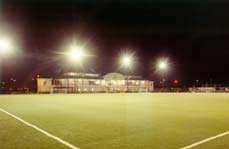 ©
Copyright of site liverweb.org.uk ©
Copyright of site liverweb.org.uk |





